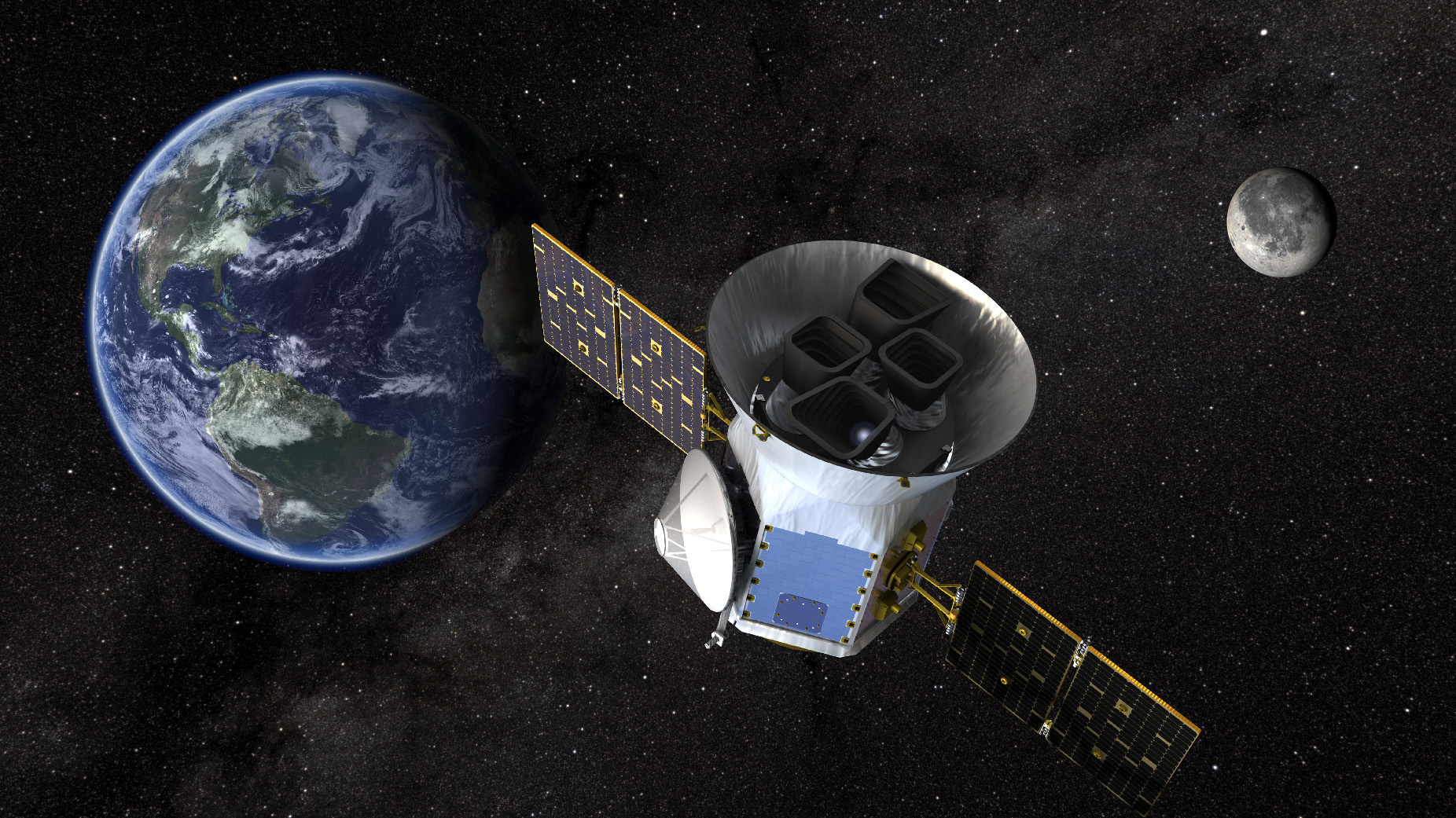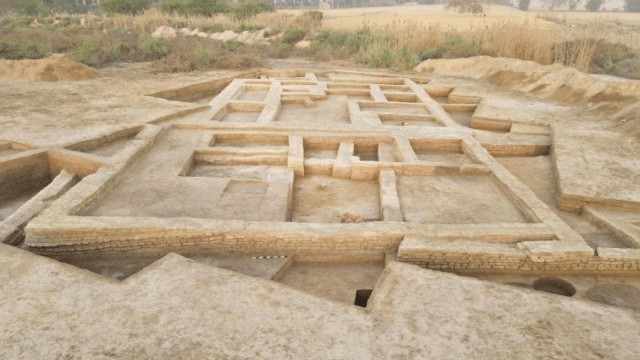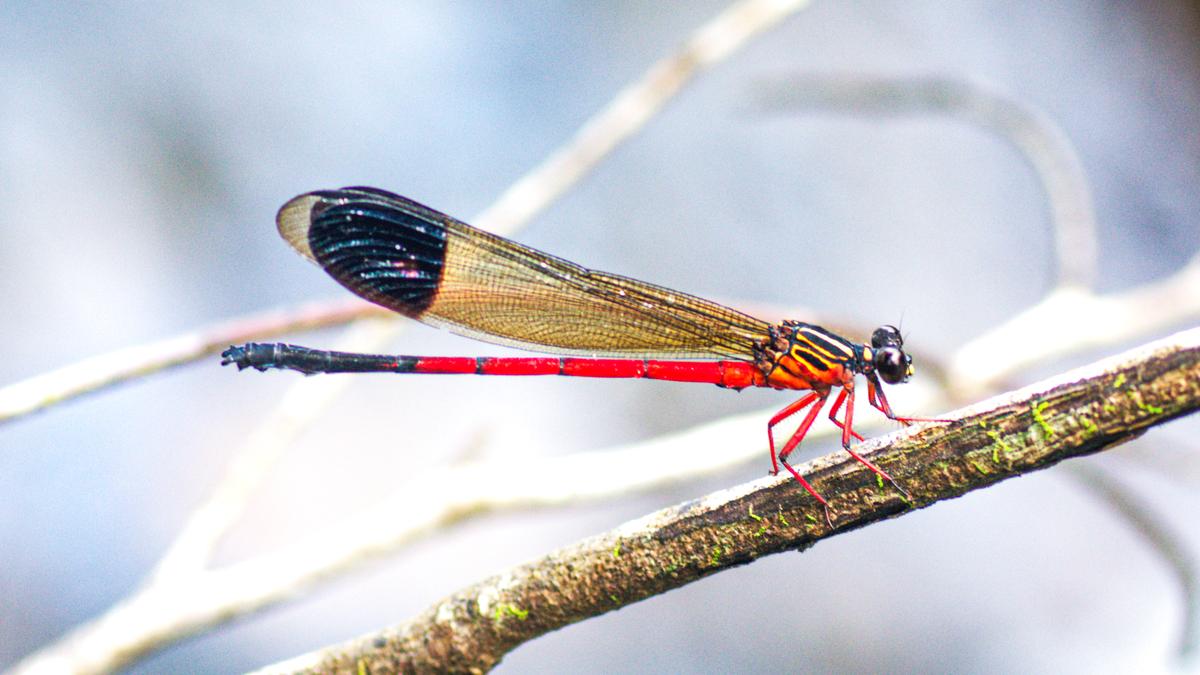Transiting Exoplanet Survey Satellite (TESS)

- 05 Apr 2025
In News:
- An international team of astronomers, using NASA’s TESS mission, has discovered a new warm Jupiter-type exoplanet located over 1,000 light-years away.
- “Warm Jupiters” are gas giants that orbit their stars at moderate distances, experiencing higher temperatures than Jupiter but cooler than “hot Jupiters”.
About TESS (Transiting Exoplanet Survey Satellite)
- Launched: March 2018 by NASA.
- Objective: To discover thousands of exoplanets (planets outside our solar system) by observing the brightest dwarf stars in the sky.
- Successor to: NASA’s Kepler Space Telescope, which pioneered large-scale exoplanet discovery (2009–2018).
Working Principle:
- TESS uses the transit method:
- It monitors periodic dips in star brightness, caused when a planet crosses (or transits) in front of its host star.
- This reveals the size (diameter) of the exoplanet and helps estimate its orbital characteristics.
- Helps identify habitable zone planets, where liquid water may exist on Earth-like worlds.
Mission Highlights:
- Prime Mission Duration: Two years, completed on July 4, 2020.
- Covered nearly 75% of the sky, divided into 26 sectors.
- Discovered 66 confirmed exoplanets during the prime mission.
- Now operating under an extended mission, continuing to explore distant planetary systems.
- Finds planets of varied sizes and compositions, from rocky Earth-like bodies to gas giants.
Heard and McDonald Islands
- 05 Apr 2025
In News:
Donald Trump has imposed a 10% tariff on imports from the Heard and McDonald Islands.
Geographical Context
- Heard Island and McDonald Islands (HIMI) are remote, sub-Antarctic volcanic islands in the southern Indian Ocean, situated:
- ~4,100 km southwest of Perth (Australia),
- ~1,600 km north of the Antarctic coast.
- They are one of Australia’s seven external territories, administered directly by the Australian government.
Physical and Ecological Significance
- Volcanically active: Home to Big Ben (2,745 m, Mawson Peak), Australia’s highest mountain outside the mainland and Tasmania.
- McDonald Island has expanded due to recent eruptions in the 1990s and 2000s.
- Only volcanically active sub-Antarctic islands, making them valuable for studying:
- Earth’s crustal processes,
- Glacial dynamics,
- Oceanic and atmospheric changes.
- Designated as a UNESCO World Heritage Site (1997) and classified under IUCN Category Ia (Strict Nature Reserve).
Biodiversity
- Inhabited by marine birds and mammals like:Penguins, elephant seals, and seabirds.
- Notable for being free from invasive species, aiding biodiversity and evolutionary research.
- Largely uninhabited by humans; no known permanent population.
US Tariff Controversy
- The US President (Donald Trump) imposed a 10% tariff on imports from HIMI—despite the islands having no known exports or trade with the US.
- The islands have no recent human presence and are mainly home to wildlife.
- Other Australian external territories targeted by similar tariffs include:
- Norfolk Island – 29% tariff despite limited economic activity.
- Cocos (Keeling) Islands and Christmas Island – 10% tariff.
- The British Indian Ocean Territory (BIOT), including Diego Garcia, also faced a 10% tariff. Diego Garcia hosts a US-UK military base, with no civilian population.
Saturn becomes undisputed 'Moon King' of Solar System
- 05 Apr 2025
In News:
In a major astronomical breakthrough, scientists have discovered 128 new moons orbiting Saturn, raising its total confirmed moon count to 274—the highest for any planet in the solar system. This discovery has been officially recognized by the International Astronomical Union (IAU).
About the Discovery
- The moons were detected using the Canada-France-Hawaii Telescope with a method called “shift and stack”, which enhances the visibility of faint objects moving across the sky.
- Most of the newly identified moons are irregular, small, and non-spherical, indicating a likely origin as captured asteroids or remnants of larger celestial bodies.
- Their clustered orbits suggest a history of violent collisions or fragmentation, possibly linked to the chaotic early evolution of the solar system.
Significance
- Confirms Saturn’s status as the planet with the most known moons, overtaking Jupiter (95 moons as of 2024).
- Enhances understanding of planetary formation, orbital dynamics, and the evolution of ring and satellite systems.
- May contribute to refining the scientific definition of a moon and deepen knowledge of irregular satellite formation in gas giants.
Key Facts about Saturn
- Position: Sixth planet from the Sun.
- Size: Second-largest planet after Jupiter.
- Type: Gas giant composed mainly of hydrogen and helium, with traces of methane and ammonia.
- Density: Approximately 0.69 g/cm³, the only planet less dense than water.
- Shape: Oblate due to rapid rotation—flattened at poles, bulging at the equator.
- Rings: Made of ice, dust, and rocky debris.
- Orbit: About 9.59 AU (1,434 million km) from the Sun; orbital period ~29.45 Earth years.
- Weather: Hosts extreme storms like the Great White Spot, recurring roughly once every Saturnian year (~29 Earth years).
Important Moons of Saturn
Titan
- Largest moon of Saturn and second-largest in the solar system, larger than Mercury.
- Only moon with a dense atmosphere, rich in nitrogen and methane.
- Features liquid hydrocarbon lakes near the poles.
- Explored by Cassini-Huygens mission; lander touched down in 2005.
Enceladus
- An icy moon with a subsurface liquid ocean.
- Known for its highly reflective surface and water-ice geysers.
- Cassini (2005) observed plumes of water vapor ejecting at ~400 m/s.
- Discovery of silica nanograins suggests hydrothermal activity, making it a prime target in the search for extraterrestrial life.
Mitathal and Tighrana: Newly Protected Harappan Sites in Haryana

- 05 Apr 2025
In News:
The Haryana Government has declared Mitathal and Tighrana, two historically significant Harappan civilisation sites in Bhiwani district, as protected archaeological sites under the Haryana Ancient and Historical Monuments and Archaeological Sites and Remains Act, 1964.
Location and Legal Status
- Both sites are located in Mitathal and Tighrana villages of Bhiwani district, Haryana.
- The notification was issued on March 13, 2025, designating a 10-acre area at Mitathal for protection.
- The Heritage and Tourism Department will ensure preservation through site fencing and deployment of guards.
Mitathal Site: Key Highlights
- Period: Dates to the Copper-Bronze Age, roughly 3rd to 2nd millennium BCE.
- Archaeological Finds:
- Well-baked red pottery with black painted motifs like pipal leaves and fish scales.
- Beads, copper tools, bangles, terracotta, and bone artefacts.
- Historical Timeline:
- First identified in 1913 through Samudragupta coins.
- Systematic excavations began in 1965–68 and continued post-2016 by the Central University of Haryana.
- Cultural Features:
- Reflects urban planning and craftsmanship typical of the Harappan Civilization.
Tighrana Site: Cultural Significance
- Chronology: Rich in pre-Harappan, Harappan, and post-Harappan layers.
- Inhabitants: Associated with Sothian culture – early Chalcolithic farming communities (~2400 BCE).
- Settlement Traits:
- Mud-brick houses, some possibly fortified.
- Use of bichrome wheel-made pottery (black and white designs).
- Artefacts:Green carnelian bangles, beads, and tools suggest a thriving bead and jewellery industry.
Archaeological and Cultural Importance
- Continuity of Settlement: Offers insight into continuous human occupation from Pre-Siswal to Post-Harappan periods.
- Socio-economic Insights:Demonstrates early agricultural practices, urban planning, and craft traditions in the Indo-Gangetic divide.
Background: Harappan Civilization
- Also known as the Indus Valley Civilization (IVC); flourished around 2500 BCE.
- One of the world’s oldest urban civilizations, alongside Mesopotamia, Egypt, and China.
- Classified as Bronze Age due to artefacts made from copper-based alloys.
- Key excavations:
- Harappa (1921–22) by Daya Ram Sahni.
- Mohenjo-daro (1922) by R.D. Banerji, under supervision of Sir John Marshall (ASI).
Euphaeawayanadensis

- 05 Apr 2025
In News:
A new species of damselfly, Euphaeawayanadensis, has been discovered in the Wayanad region of Kerala, marking a significant addition to India’s odonate diversity.
Key Details:
- Taxonomy:
- Belongs to the family Euphaeidae.
- Officially recognized as Kerala’s 191stodonate species (including damselflies and dragonflies).
- 223rd species recorded from the Western Ghats.
- Discovery and Research:
- First observed in 2013 at Kalindi River, Thirunelli, Wayanad.
- Confirmed after field studies conducted until 2023 across Wayanad, Aralam (Kannur), and western Coorg slopes (Karnataka).
- Discovery published in the peer-reviewed journal ENTOMON.
- Research Contributors:Collaborative effort involving scientists from Kerala Agricultural University, Alphonsa College, and conservation groups like Warblers and Waders, Travancore Nature History Society.
- Identification Process:
- Initially mistaken for Euphaeapseudodispar (from Maharashtra).
- Declared a distinct species based on morphological traits and genetic analysis.
Distinct Morphological Features
- Hind wing: Longer black patch compared to similar species.
- Stripes: Broader, uninterrupted humeral and antehumeral stripes in males.
- Male genital vesicle: Structurally unique from related species.
Habitat & Distribution
- Inhabits fast-flowing rocky streams with aquatic vegetation.
- Found in evergreen and semi-evergreen forests along stream banks.
- Active throughout the year except March–April (dry season).
- Shows restricted distribution, making it ecologically vulnerable.
Conservation Importance
- The discovery underlines the biodiversity richness of the Western Ghats.
- Highlights the need for targeted conservation of aquatic invertebrates in fragile ecosystems like Wayanad.
- Emphasised by experts from the IUCN Dragonfly Specialist Group.
